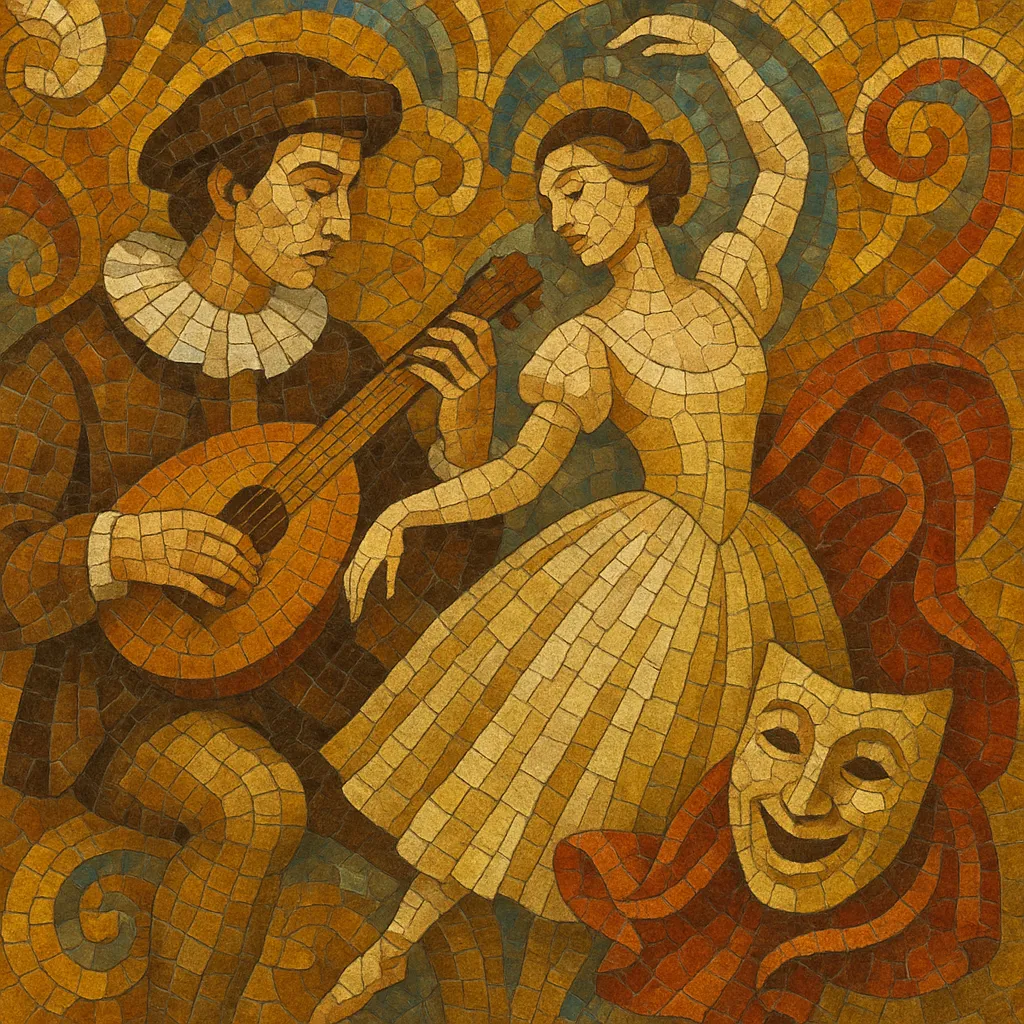Comédie-ballet is a French Baroque theatrical form that fuses spoken comedy with music and dance in an integrated, plot-driven spectacle. It was devised to entertain courtly audiences with witty dialogue, elegant dancing, and richly scored intermèdes that commented on or extended the action.
Developed by Molière in close collaboration with Jean-Baptiste Lully and choreographer Pierre Beauchamp under the patronage of Louis XIV, the genre balances dramatic scenes with sequences of airs, choruses, and court dances (gavotte, bourrée, sarabande, gigue), framed by the characteristic French overture. Its tone ranges from satirical to farcical, but its musical language remains refined, ornamented, and distinctly French.
Comédie-ballet emerged in the 1660s within the cultural program of Louis XIV. Seeking spectacles that displayed courtly elegance and royal power, the king’s circle encouraged hybrid entertainments. Molière provided the dramaturgy, Pierre Beauchamp codified the dance, and Jean-Baptiste Lully supplied music crafted for French taste. Their prototype, Les Fâcheux (1661), presented at Vaux-le-Vicomte, became the model for a new form that interleaved spoken acts with musical-dance intermèdes.
Throughout the 1660s, Molière and Lully perfected the recipe: a French overture, comic scenes in prose or verse, and carefully placed divertissements in which dancers, chorus, and soloists advanced character and theme. Works such as Le Mariage forcé (1664), George Dandin (1668), Monsieur de Pourceaugnac (1669), and Le Bourgeois gentilhomme (1670) showcased the seamless interplay of satire, dance rhythms, and vocal set pieces. The style crystallized French Baroque stage aesthetics: clarity of declamation, elegance of movement, and a courtly orchestral palette.
When Molière and Lully parted ways, Molière turned to Marc-Antoine Charpentier for intermèdes. The collaboration culminated in Le Malade imaginaire (1673), in which Charpentier’s graceful writing and Molière’s sharp comedy reaffirmed the viability of the form beyond the Lully partnership. Even as Lully pivoted to tragédie en musique, comédie-ballet continued to thrive in Parisian theatres.
By the early 18th century, tastes shifted toward opéra-ballet, opéra comique, and, later, operetta. Yet comédie-ballet’s blueprint—spoken plot interwoven with song, dance, and instrumental numbers—directly informed these genres and, by extension, the DNA of modern musical theatre. Its influence is felt wherever dialogue, choreography, and composed numbers operate in a mutually reinforcing dramatic web.


